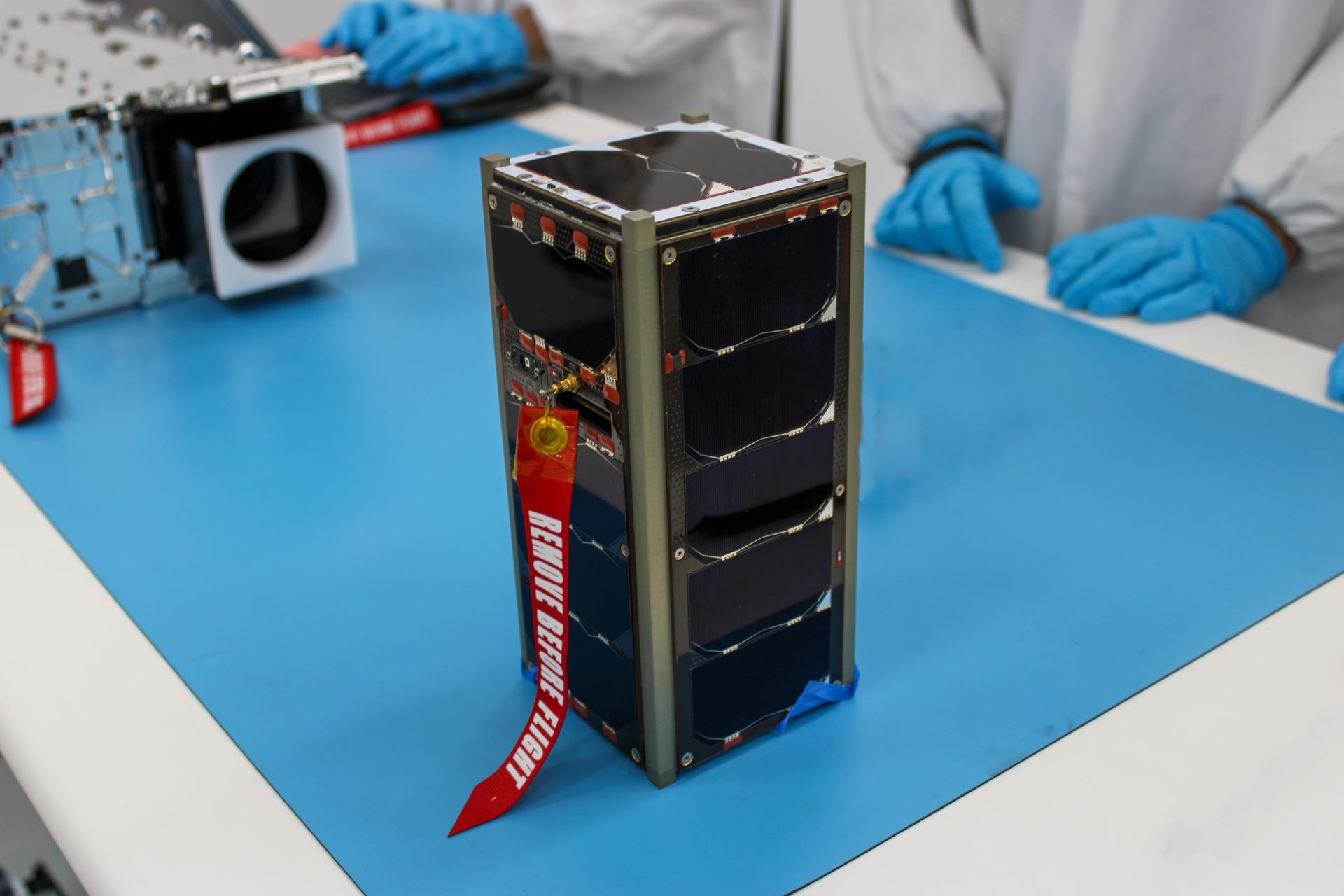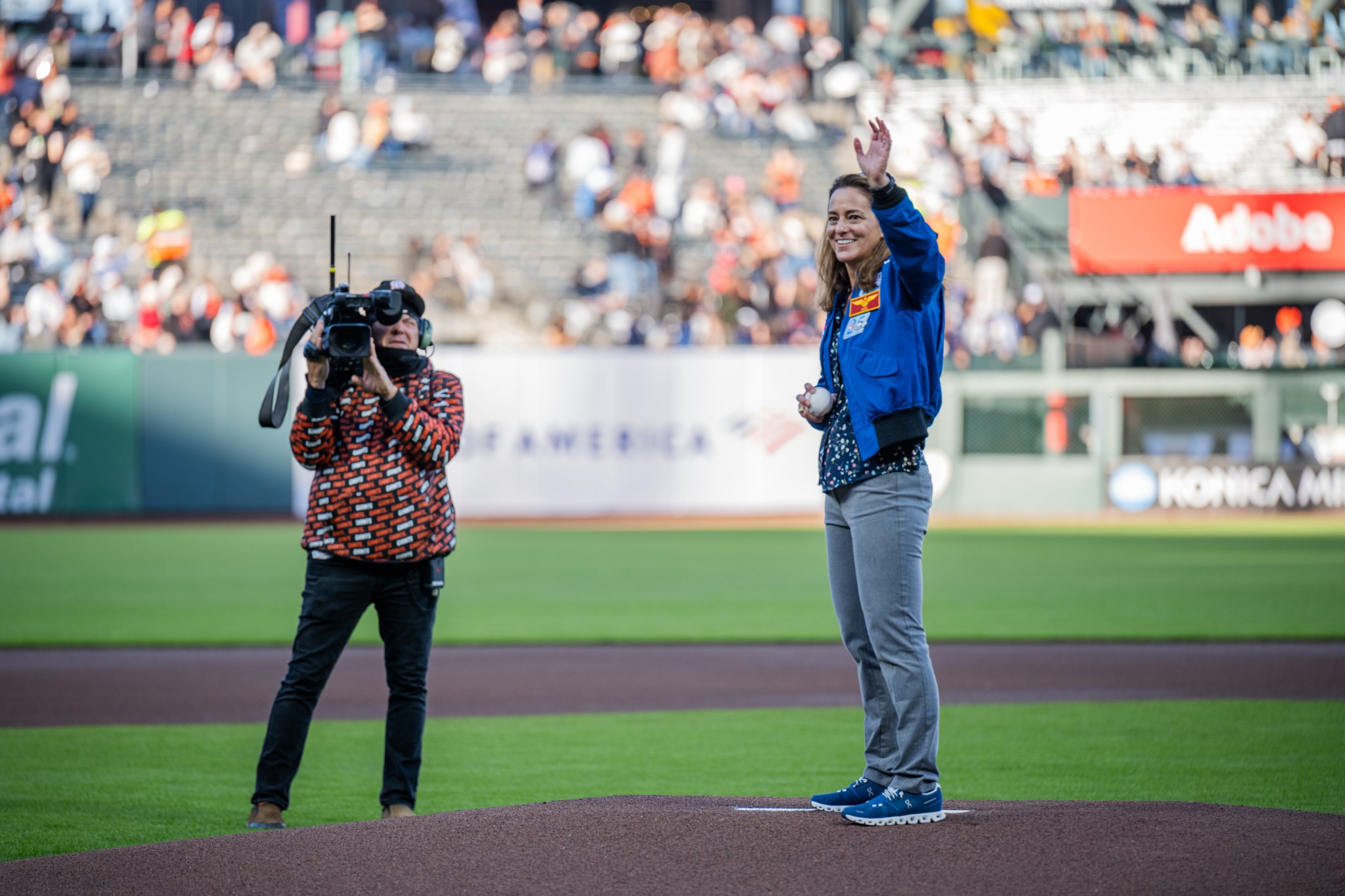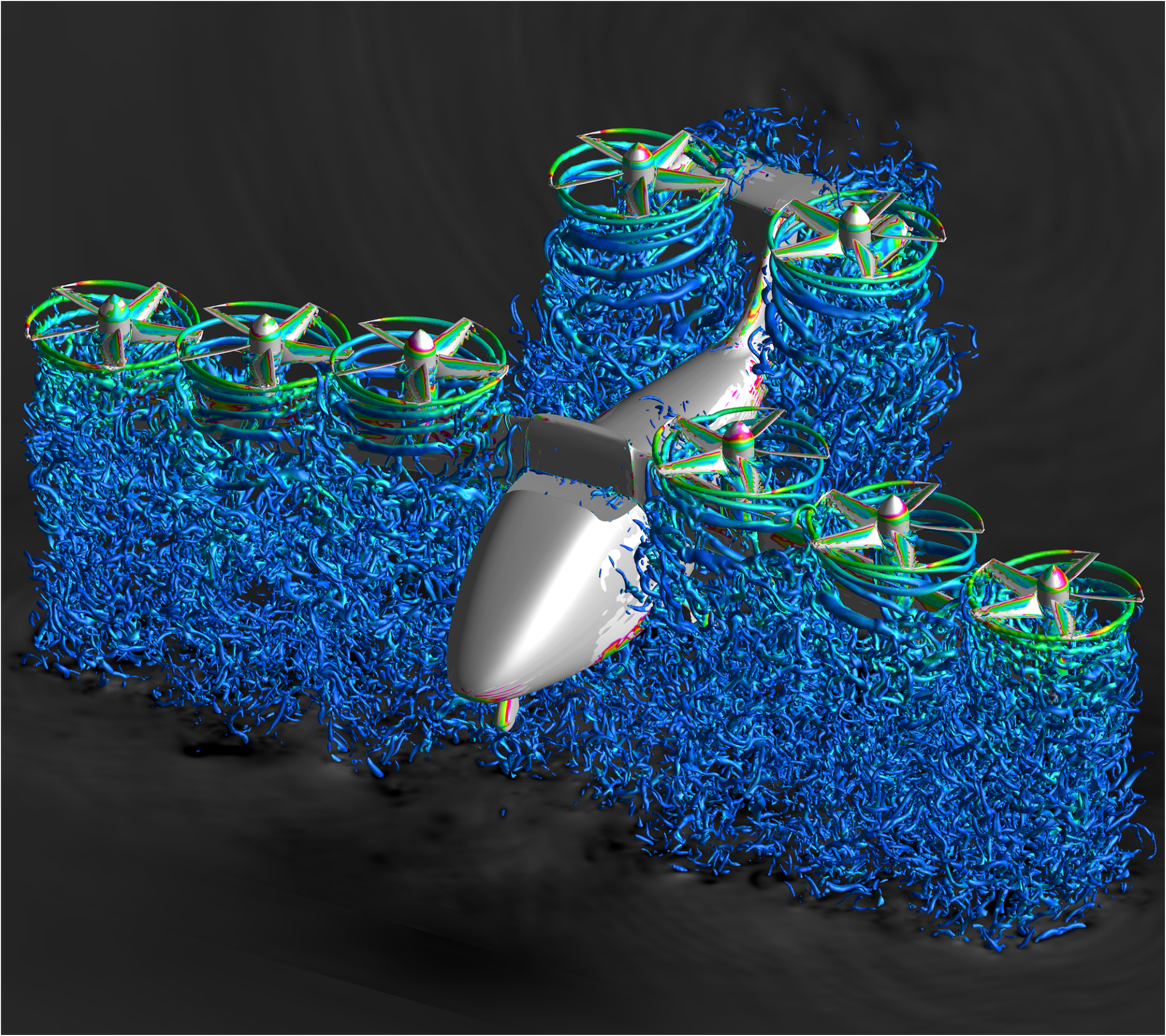A Satellite for Optimal Control and Imaging (SOC-i) CubeSat awaits integration at Firefly’s Payload Processing Facility at Vandenberg Space Force Base, California on Thursday, June 6, 2024. SOC-i, along with several other CubeSats, will launch to space on an Alpha rocket during NASA’s Educational Launch of Nanosatellites (ELaNa) 43 mission as part of the agency’s CubeSat Launch Initiative and Firefly’s Venture-Class Launch Services Demonstration 2 contract. NASA NASA is readying for the launch of several small satellites to space, built with the help of students, educators, and researchers from across…
Read MoreTag: Ames Research Center
Astronaut Nicole Mann Throws First Pitch at Giants-Angels Game
NASA/Brandon Torres NASA astronaut Nicole Mann waves as she is introduced before throwing out the ceremonial first pitch at the San Francisco Giants versus Los Angeles Angels game at Oracle Park in San Francisco on June 14, 2024. Mann was honored for her accomplishments at the Giants’ Native American Heritage Night. She is the first Indigenous woman from NASA to go to space, having served as commander of NASA’s SpaceX Crew-5 mission, which launched in 2022.
Read MoreNASA Ames Astrogram – May/June 2024
Swarming for Success: Starling Completes Primary Mission by Tara Friesen After ten months in orbit, the Starling spacecraft swarm successfully demonstrated its primary mission’s key objectives, representing significant achievements in the capability of swarm configurations. Swarms of satellites may one day be used in deep space exploration. An autonomous network of spacecraft could self-navigate, manage scientific experiments, and execute maneuvers to respond to environmental changes without the burden of significant communications delays between the swarm and Earth. The four CubeSate spacecraft that make up the Starling swarm have demonstrated success in autonomous…
Read MoreNASA Research Park Public Documents
3 min read Preparations for Next Moonwalk Simulations Underway (and Underwater) Economic Benefits Study: 2015 Economic Benefits Study 2010 Economic Benefits Study 2010 Economic Benefits Study – Appendices Development Plans: NASA Ames Development Plan – Dec 2002 Environmental Issues and Management Plan US Fish and Wildlife Service Information Consultations on Proposed Development of NASA Ames Research Center Record of Decision NASA Research Park Environmental Reports: Building 19 Lead, Asbestos, Mold Report – Feb 2002 Lead Impacted Soil Summary – Jul 2002 Lead Impacted Soil Sampling – Jan 2003 Environmental Management…
Read More2024 Total Solar Eclipse: Prediction vs. Reality
2 min read 2024 Total Solar Eclipse: Prediction vs. Reality Image Before/After Before a total solar eclipse crossed North America on April 8, 2024, scientists at Predictive Science Inc. of San Diego aimed to foresee what the Sun’s outer atmosphere, the corona, would look like during totality. The predictions help researchers understand the accuracy of their models of the Sun’s corona, which extends along its magnetic field. A solar eclipse offers a rare opportunity to view the entire corona from Earth, guiding research into how its energy can cause solar…
Read MoreResearchers Develop ‘Founding Document’ on Synthetic Cell Development
3 min read Preparations for Next Moonwalk Simulations Underway (and Underwater) Synthetic cell development could lead researchers to new developments in food and medical sciences and a better understanding of the origins of life on Earth. NIH/Rhoda Baer Cells are the fundamental units of life, forming the variety of all living things on Earth as individual cells and multi-cellular organisms. To better understand how cells perform the essential functions of life, scientists have begun developing synthetic cells – non-living bits of cellular biochemistry wrapped in a membrane that mimic specific…
Read MoreNASA Ames Astrogram – March/April 2024
Astrogram banner Advanced Composite Solar Sail System Successfully Launches On April 23, the Advanced Composite Solar Sail System CubeSat mission launched successfully aboard an Electron rocket launched by Rocket Lab and carried Ames’ payload from Māhia, New Zealand. The CubeSat was subsequently delivered to a Sun-synchronous orbit around Earth. Ames has pioneered the use of CubeSats and small satellites to run innovative, cost-effective missions and test technologies in space, providing leadership in cost-effective spaceflight missions for NASA. An artist’s concept of NASA’s Advanced Composite Solar Sail System spacecraft in orbit. NrediASA/Aero…
Read MoreNASA Invites Media to Learn About New Tech Mission Powered by the Sun
A new NASA mission is testing a new way to navigate our solar system by hoisting its sail into space – not to catch the wind, but the propulsive power of sunlight. NASA’s Advanced Composite Solar Sail System is led by the agency’s Ames Research Center in California’s Silicon Valley. The microwave oven-sized CubeSat is scheduled to launch aboard a Rocket Lab Electron rocket from the company’s Launch Complex 1 on the Mahia Peninsula of New Zealand. The launch window opens at 3 p.m. PDT on Tuesday, April 23 (10 p.m. UTC). Successful deployment and operation…
Read MoreNASA, FAA Partner to Develop New Wildland Fire Technologies
Artist’s rendering of remotely piloted aircraft providing fire suppression, monitoring and communications capabilities during a wildland fire. NASA NASA and the Federal Aviation Administration (FAA) have established a research transition team to guide the development of wildland fire technology. Wildland fires are occurring more frequently and at a larger scale than in past decades, according to the U.S. Forest Service. Emergency responders will need a broader set of technologies to prevent, monitor, and fight these growing fires more effectively. Under this Wildland Fire Airspace Operations research transition team, NASA and…
Read MoreNASA Noise Prediction Tool Supports Users in Air Taxi Industry
1 min read Preparations for Next Moonwalk Simulations Underway (and Underwater) The results from a NASA software tool called OVERFLOW, used to model the flow of air around aircraft, are shown in this image. NASA Several air taxi companies are using a NASA-developed computer software tool to predict aircraft noise and aerodynamic performance. This tool allows manufacturers working in fields related to NASA’s Advanced Air Mobility mission to see early in the aircraft development process how design elements like propellors or wings would perform. This saves the industry time and…
Read More





